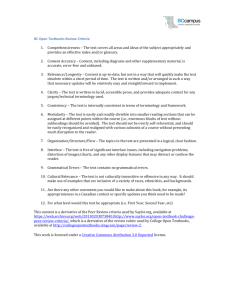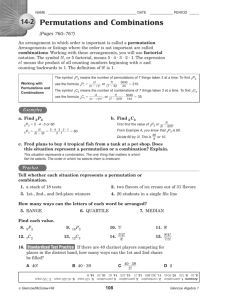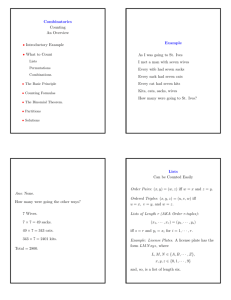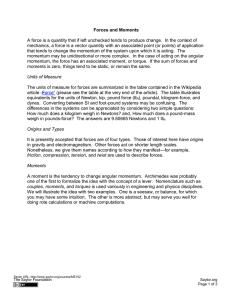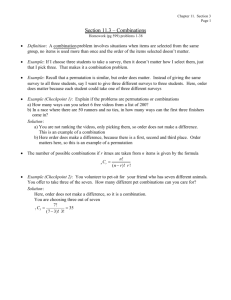CS202 – Subunit 6.2.6 The Saylor Foundation`s “Combinations
advertisement
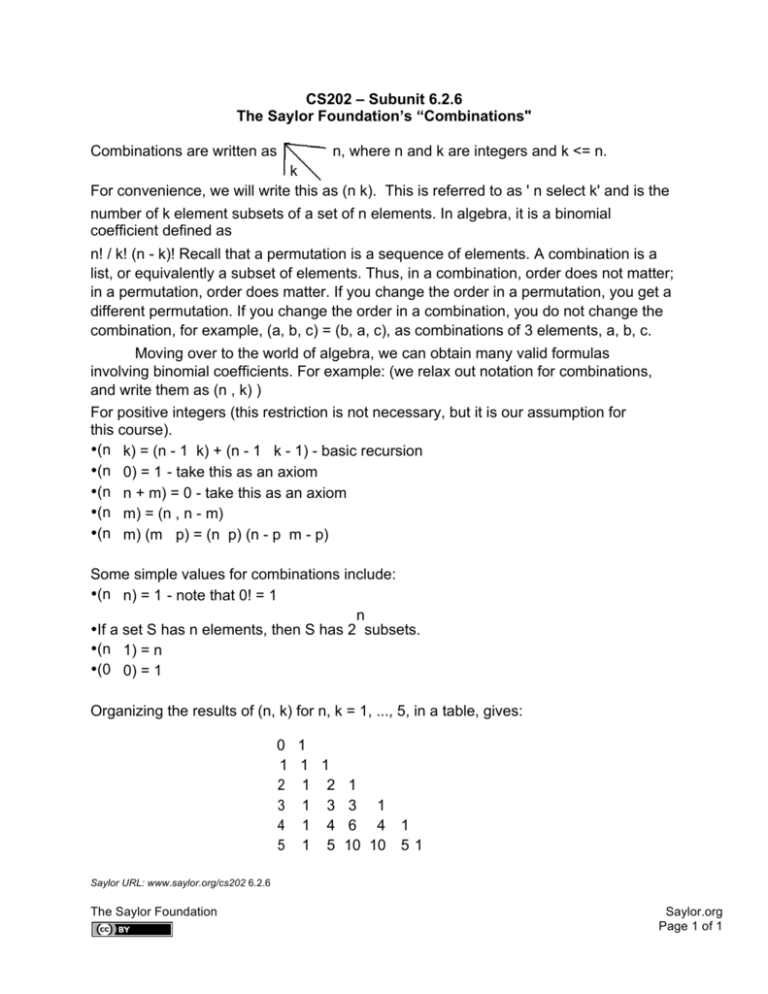
CS202 – Subunit 6.2.6 The Saylor Foundation’s “Combinations" Combinations are written as n, where n and k are integers and k <= n. k For convenience, we will write this as (n k). This is referred to as ' n select k' and is the number of k element subsets of a set of n elements. In algebra, it is a binomial coefficient defined as n! / k! (n - k)! Recall that a permutation is a sequence of elements. A combination is a list, or equivalently a subset of elements. Thus, in a combination, order does not matter; in a permutation, order does matter. If you change the order in a permutation, you get a different permutation. If you change the order in a combination, you do not change the combination, for example, (a, b, c) = (b, a, c), as combinations of 3 elements, a, b, c. Moving over to the world of algebra, we can obtain many valid formulas involving binomial coefficients. For example: (we relax out notation for combinations, and write them as (n , k) ) For positive integers (this restriction is not necessary, but it is our assumption for this course). •(n k) = (n - 1 k) + (n - 1 k - 1) - basic recursion •(n 0) = 1 - take this as an axiom •(n n + m) = 0 - take this as an axiom •(n m) = (n , n - m) •(n m) (m p) = (n p) (n - p m - p) Some simple values for combinations include: •(n n) = 1 - note that 0! = 1 n •If a set S has n elements, then S has 2 subsets. •(n 1) = n •(0 0) = 1 Organizing the results of (n, k) for n, k = 1, ..., 5, in a table, gives: 0 1 2 3 4 5 1 1 1 1 2 1 1 3 3 1 1 4 6 4 1 1 5 10 10 5 1 Saylor URL: www.saylor.org/cs202 6.2.6 The Saylor Foundation Saylor.org Page 1 of 1

